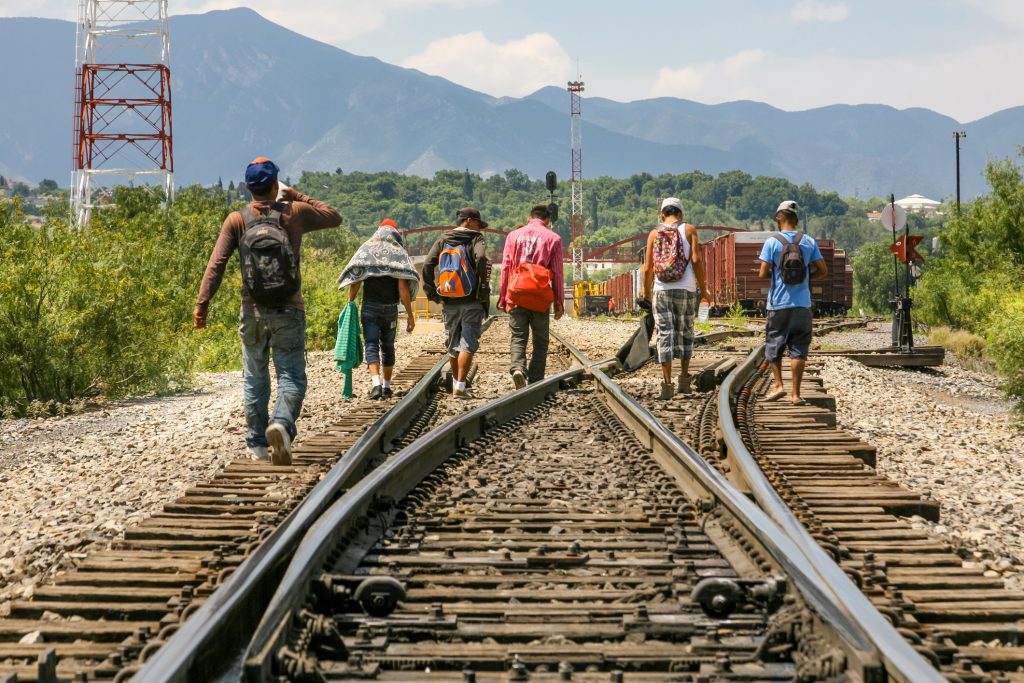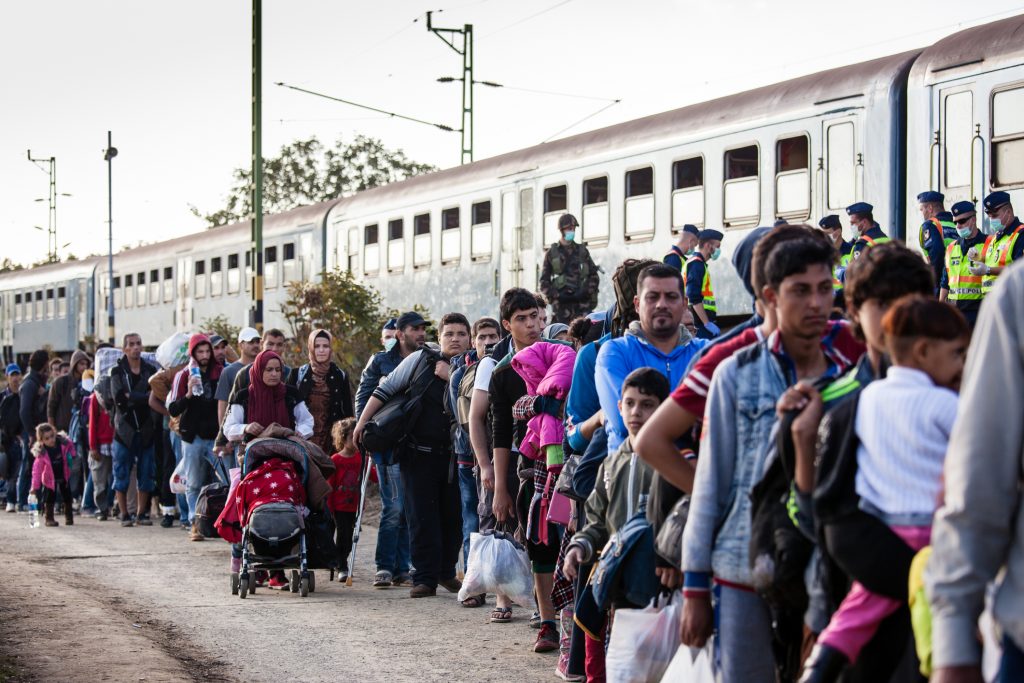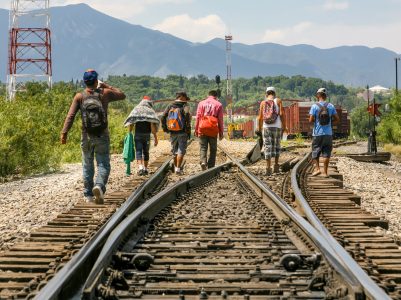By Dr. Elizabeth Ferris – Georgetown University, the Brookings Institution
– – –
Nobody wants to leave their country.
To become a refugee is not something that people take lightly. They grab their kids and whatever they can take with them, and they flee, hoping they’ll be back. I’ve done a lot of work with Syrian refugees in recent years, and every single person I’ve talked to has said something like this:
I had no idea it would last this long. I thought it would just be for a week or two until the violence calmed down and we could go back.
I didn’t see myself living in a refugee camp or under plastic bags for months or years.
Nobody thinks this is going to be permanent.
2020 witnessed the highest number of displaced people of all time—about 82 million people. That’s right up there with the chaos after World War II, when about 70 million people were displaced by the wars in Europe.
It’s important to talk about why that number is so high. On the one hand, people are being newly displaced every year, every month, in every region of the world. Even though Colombia, for example, has a peace agreement that’s being implemented, hundreds of thousands of people are being displaced by the activities of armed groups. You see the same in Myanmar, in South Sudan, in Yemen, in Syria—so there’s always new displacement.
But the real reason the numbers are increasing is that there aren’t viable solutions for people. People who were displaced last year are still displaced this year. In fact, the average length of time someone spends displaced is between 15 and 25 years. We’re not finding solutions.

Why Solutions are Scarce
First of all, conflicts are dragging on so people can’t go back home. Life is still insecure in places like Syria and even Northern Iraq. Secondly, displaced people are not being allowed to settle into life where they currently are, even if that’s what they would like to do. Host countries, in particular, feel like they have more refugees than they can handle. They want them eventually to go home—and in places like Lebanon, Jordan, and Turkey, governments don’t see the refugees staying there permanently. And then the third solution—resettlement to third countries—has plummeted, largely as a result of U.S. government action, when the past administration slashed the number of refugees being resettled in the United States dramatically. Resettlement has never helped more than 1% of the world’s refugees, but today it’s less than half of 1%. And that has a knock-on effect, when a government such as Lebanon says, “You know, why should we continue to host 1.5 million Syrian refugees in a country with a population of 6 million when the United States with all of its wealth and resources says it can’t take anymore?” Resettlement has always been important—not just for the people it has helped, but as a signal of responsibility-sharing where other countries, distant countries, show they’re willing to step up and accept refugees into their communities.
Traditionally, the U.S. has been a strong leader for refugees worldwide. Our country was founded mainly by refugees. Everybody in the United States is either an indigenous person, a former slave, a former immigrant, or a former refugee. And our leadership role has encouraged governments in other parts of world to allow refugees to remain and to adopt an attitude that “Well, we have fewer resources, but if the U.S. is showing the way, we want to do our part and not see refugees as just a burden, but as a part of who we are—our identity.” I think we’re losing that—with dire consequences—in the United States and also globally, and the knock-on effects are really frightening.
The Complex Case of the Internally Displaced
In addition, I think that the whole issue of internally displaced people needs much more attention. Out of 80 million people who are displaced, about 25 million are refugees, but over 40 million are displaced within the borders of their own countries. They’re often invisible. We hear a lot about the six million Syrian refugees, but not so much about the 8 million internally displaced people who haven’t been able to cross the border. People who are displaced within the borders of their country are often even more vulnerable than refugees. They’re closer to the violence, international assistance is more difficult, and governments find it easy to ignore them. We need to do more to ensure that IDPs are protected and assisted. We need to do more to support solutions for them.
In the case of internally displaced people, under international law it is the responsibility of those governments to care for the people inside their country who are displaced. It’s seen as an internal issue. However, there is also an understanding that it’s okay for governments with large numbers of IDPs to ask for international assistance. And that’s happened in many countries where the numbers have just been too big for a government to handle. In South Sudan right now, there are over 2 million internally displaced people, and the government doesn’t have the resources to cope with that.
While it’s the responsibility of governments to protect and assist those who are displaced within their borders, too many times it is the government that is causing the displacement. In Myanmar, governmental policies are leading to the persecution and displacement of the Rohingya refugees and other ethnic minorities. But it’s also the responsibility of that government to care for and assist them. So in Myanmar, they put people into internment camps. They move them into these virtual prisons.
Under the principle of state sovereignty, governments are largely free to do what they please within the borders of their country. The Responsibility to Protect Doctrine, which was adopted in 2005 by the U.N., makes the case that when the abuses reach a certain level, the international community has an obligation to intervene. There was a lot of hope around that—that it might provide some support for internally displaced people. But then it was used in Libya to justify overthrowing Gaddafi. And now this whole notion of ‘Responsibility to Protect’ is tinged with, “Oh, it’s just a fig leaf for Western intervention.” So it’s been rejected by a lot of countries where it’s been most needed.
The Role of Religion and Belief in Experience
In some cases, religious differences and tensions have contributed to the conflicts that displace people. Unfortunately, there’s still persecution of people because of their religion, which forces people to flee. In most conflicts, religion is one of many factors contributing to violence. In places like South Sudan, for example, there may be a religious component, but there are also ethnic differences, and frankly, just a lot of personal greed that is driving the conflicts. I don’t think you can blame conflicts on religion across the board, although there are cases where religion plays an important role.
For most people who are displaced, religion is sometimes used as an explanation for what they have experienced. Many times I’ve talked with refugees who have said things like, “God is punishing us. We must have sinned and done something wrong.” They see it in religious terms. Sometimes it leads them to question their faith: “How could God let this happen to my daughter? I don’t believe in God anymore if these kinds of terrible atrocities are taking place.” Often they turn to religion for comfort and hope in the midst of adversity.
And even for people who work with refugees, sometimes there are questions about religion. Sometimes some of my secular, atheist, agnostic colleagues have come to me in the face of these tragedies and say, “Explain this to me. Is there a God that would allow the slaughter of Rwandans?” for example, during the genocide. Or when they saw horrific abuses against children through trafficking networks. Even though they don’t profess any particular religion, when things like this happen, people often begin to ask questions of a spiritual or religious nature in trying to make sense of some of these terrible things.
The Contributions of Faith-based Communities
On the positive side, everywhere in the world, faith communities are on the front line when people are displaced. Whether it’s local mosques or Buddhist temples or Christian churches, people flee to faith-based places in search of sanctuary or protection. Sometimes, like in the Rwandan genocide, they flee to churches and then their churches are burned down, and there aren’t safe places at all. But there seems to be a natural impulse to seek out faith communities in times of stress. Usually, religious institutions are more respected than governmental authorities, and all faith traditions include calls to welcome strangers and minister to those in need. So, during Cyclone Nargis in Myanmar in 2008, Buddhist temples were filled with people who were searching for safety, for help. And they received it.
Religious organizations around the world have traditionally reached out to those in need, offering humanitarian aid, protection, shelter, clothing, medical care—whatever they can. Sometimes local religious communities are overwhelmed and it’s the big U.N. or international NGOs that take the lead, sometimes pushing small faith-based communities aside, in their efforts to provide relief. But I think the contributions of faith-based organizations is pervasive and constant. And frankly, it’s often not taken nearly seriously enough by the big humanitarian players.
Things are thankfully starting to change. In 2012, the U.N. High Commissioner for Refugees organized a dialogue with religious leaders. And they came away with a greater appreciation for the extensive faith networks in all regions. Faith-based organizations are linked to national, regional, and international structures. Local faith leaders are rooted in their communities, they’re trusted, and they can be effective partners. Sometimes U.N. agencies work directly through faith-based organizations, providing funds for churches or mosques to implement specific programs. 
I remember the very first humanitarian crisis I worked on in the mid-1980s: the famine in Ethiopia. And I remember standing with some Canadian church partners as we watched the delivery of grain from the Canadian government. It was massive—as far as you could see, there were trucks piled high with grain. In my mind, I was calculating it was something like dozens of football fields piled 20 feet high with grain. It was an impressive amount of grain that Canadians were sending to help people in need. And then the man standing next to me, who was a priest with the Ethiopian Orthodox Church, said this:
Who do you think’s going to deliver all that grain? We have soup kitchens and 40,000 parishes across Ethiopia to make sure that all that grain and food generally gets to the people who need it.
In the annals of contributions, the Canadian government, Canadian churches—their grain contribution was lauded. But the contribution of these 40,000 parishes—mostly women, I’ll point out—who were cooking up the food and making sure it got to people in need—that wasn’t acknowledged. So I think there needs to be much more appreciation for what faith-based organizations are doing. Of course, Lord knows they’re not perfect. Sometimes they’re politicized. Sometimes they make mistakes. Sometimes they’re well-meaning and make things worse. But I think we need to recognize their contributions and help them acquire the capacity to deliver the things that they can uniquely do.
Religious Institutions as a Bridge
Churches especially, but also Islamic organizations and other religions, have a membership that transcends borders. They have global connections. I worked for many years with the World Council of Churches, which was just wonderful, because you could link up the actions of individual churches or interfaith groups in very different countries with global networks—which could in turn bring those issues to global forums where you could get high-level political attention to solve crises or work out agreements allowing for the return of refugees. I think that ‘borderless’ aspect of religious institutions is a real asset that can and should be used.
By definition, people who cross an international border are an issue of international concern. We’ve seen over and over again that refugees are kind of like the canary in the coal mine. When refugees arrive, you think “Oh wow, something bad must be happening in that country,” and it may be the first danger signal. But if people can’t leave their country, there is less international awareness and less motivation to address the causes producing a refugee crisis. So seeing refugees is a warning sign—it’s a sign that we need to take action to stop whatever it is that’s provoking people to leave their country.
I’ve done a lot of work with international policy to set the broad parameters—whether it’s the way these crises are funded, or who responds when, or different policy measures that prioritize people with disabilities, etc, but change is needed at all levels (local, national, and international) to improve the conditions for refugees and other displaced people. I think it’s a particularly interesting and important role for faith communities to draw the connections between those levels—between what’s happening in Nebraska, and in Washington, and in Geneva. And I think religious institutions are perfectly poised to do that because of their transnational nature.
– – –
Dr. Elizabeth Ferris is an ISIM Research Professor at Georgetown and a non-resident senior fellow in Foreign Policy at the Brookings Institution. Prior to joining Brookings in November 2006, Elizabeth spent 20 years working in the field of international humanitarian response, most recently in Geneva, Switzerland at the World Council of Churches. She has also served as Chair of the International Council of Voluntary Agencies (ICVA), as Research Director for the Life & Peace Institute in Uppsala, Sweden, and as Director of the Church World Service Immigration and Refugee Program in New York. She has been a professor at several U.S. universities and served as a Fulbright professor to the Universidad Autónoma de México in Mexico City. She has written or edited six books and many articles on humanitarian and human rights issues which have been published in both academic and policy journals. Her current research interests focus on the politics of humanitarian action and on the role of civil society in protecting displaced populations.


